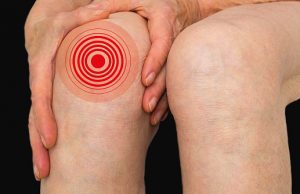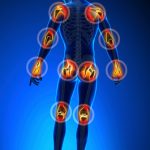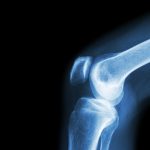 It is Arthritis Awareness Month, and we at Bel Marra know how it can be living with arthritis pain. Having joint pain can affect people of any age, but when it’s something that has to be dealt with on a daily basis, it can be extremely debilitating. So, in order to assist those suffering from the condition, we have compiled a list of articles we think will help with arthritis symptoms. You will find articles on the topics of not well-known types of arthritis such as infectious arthritis, psoriatic arthritis, septic arthritis, and arthritis mutilans.
It is Arthritis Awareness Month, and we at Bel Marra know how it can be living with arthritis pain. Having joint pain can affect people of any age, but when it’s something that has to be dealt with on a daily basis, it can be extremely debilitating. So, in order to assist those suffering from the condition, we have compiled a list of articles we think will help with arthritis symptoms. You will find articles on the topics of not well-known types of arthritis such as infectious arthritis, psoriatic arthritis, septic arthritis, and arthritis mutilans.
Early arthritis symptoms you should know
Having arthritis pain can be quite a nuisance. It hampers our day, making the most mundane things difficult and subjecting us to unnecessary agony. But the pain associated with arthritis isn’t the only symptom people have to endure.
Advertisement
“In a lot of cases, people notice other things showing up before they ever have pain,” says Kevin Shea, an orthopedic surgeon at St. Luke’s Health System in Boise.
While arthritis may be seen as one entity, there are actually hundreds of different types, and each person diagnosed with the condition may present with an entirely different constellation of symptoms from the next, making each case unique.
Being aware of the symptoms arthritis sufferers may present allows you and your doctor to possibly slow down its progression. Early detection can allow for the use of anti-inflammatory medication or certain lifestyle changes to help preserve normal functioning. The following are a list of non-pain-related symptoms that are associated with arthritis to keep a look out for. Continue reading…
 Arthritis mutilans: Symptoms, causes, diagnosis, and treatment
Arthritis mutilans: Symptoms, causes, diagnosis, and treatment
Arthritis is a common term used to describe disorders that affect the joints, but we don’t often hear about arthritis mutilans (AM). It is a severe but rare form of arthritis that attacks bone and cartilage in the joints.
People who suffer from arthritis mutilans usually face deformation in the joints of the hands and feet. The condition gets its name from its mutilating potential. It is a type of psoriatic arthritis that destroys the joints and can lead to the shortening of affected fingers and toes. Less than five percent of people who suffer from psoriatic arthritis (PsA) develop arthritis mutilans, but it is often confused with rheumatoid arthritis since RA can also cause joint deformity. Some doctors refer to arthritis mutilans as “chronic absorptive arthritis” because it causes bone resorption. Continue reading…
 How to deal with arthritis pain on a daily basis
How to deal with arthritis pain on a daily basis
Living with persistent pain, such as arthritis pain, is always a challenge. You can manage occasional episodes of pain with quick go-to remedies like over-the-counter painkillers, but if the pain is chronic—meaning, it’s here to stay—you’ll need a long-term solution to continue functioning (and to do so in a safe manner) and still enjoy your life. In other words, you need to learn how to deal with pain day in and day out and adjust your lifestyle to include this new value into the equation.
You may not like this idea, but in order to effectively transition into this new way of living, you’ll need to accept your pain as a family member. When you start living with someone, conflicts are unavoidable, but the longer you two co-exist under one roof, the more you become accustomed to each other and the better you get along. True, your relationship with pain is one-sided, but thinking of things this way should help you prepare for effectively handling pain in the long term without compromising your regular lifestyle. Continue reading…
 Infectious (septic) arthritis: Causes, complications, and treatment tips
Infectious (septic) arthritis: Causes, complications, and treatment tips
Advertisement
Infectious arthritis is an infection in a joint, and it may also be referred to as septic arthritis. It typically occurs due to an infection caused by bacteria or a virus that spreads to a joint or the fluid surrounding it—the synovial fluid. Infections usually begin in another area of the body and spread through the bloodstream to the joint, causing it to become infected. Other routes of infection include surgery contamination, open wounds, or injections. These types of infections usually only affect one joint at a time, with larger joints such as the knee, hip, or shoulder seeing the most cases. Infectious arthritis can occur in people of all ages, and especially in those who use intravenous drugs. Here you will learn how to get infectious arthritis, how long it lasts, and septic arthritis criteria for diagnosis. Continue reading…
 Good and bad foods for psoriatic arthritis
Good and bad foods for psoriatic arthritis
You may have heard of psoriasis—a condition that features red patches of skin with silvery scales. You may have also heard of arthritis, the joint pain disorder. What most people don’t know is that these two conditions can actually present together in an entirely separate condition.
Psoriatic arthritis (PA) is a chronic autoimmune condition resulting in increased inflammation of the body that gets worse over time, but those affected may have symptom-free periods on occasion. The symptoms of PA often resemble that of rheumatoid arthritis, as both diseases cause the joints to become painful, swollen, and warm to the touch. However, PA is more likely to cause swollen fingers and toes, foot pain, and lower back pain, and of course, it also presents with the typical skin abnormalities seen in psoriasis patients. Individuals with PA may also have an increased risk for heart disease, high blood pressure, and diabetes. This joint pain can lead to significant joint damage over time, so it is advised to see your doctor for treatment. Medications used for PA can carry many side effects, but luckily. the food you eat can be a big help in reducing symptoms and even decreasing risk factors associated with excessive inflammation. Continue reading…
